Key Features
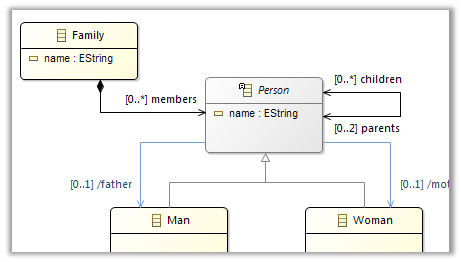
Business Domain Definition
Use a powerful graphical editor to define the domain model corresponding to your own business vocabulary.
With Obeo Designer you will easily create or edit an Ecore model containing classes and relationships which define how the data of your domain will be saved.
It allows you to create a modeling workbench which natively handles your vocabulary concepts. This approach dramatically reduces the learning curve of your modeling tools.
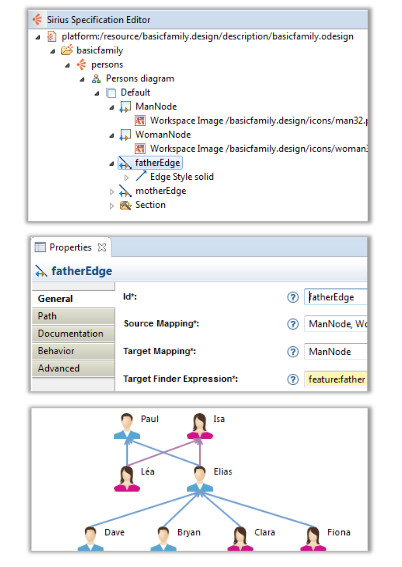
Easy-to-Customize Representations
Easy-to-Customize Representations Create a modeling workbench without writing any code : the representations (diagrams, tables, matrices and trees) are described in a configuration file. Each representation description defines the model elements which will be visible, how they will be dispayed (which shape, color, etc) and how they can be edited (through a palette for example).
To facilitate its development and testing, the modeling tool can be evaluated at runtime with a sample model: change the representation description and its instances are automatically refreshed.
To implement specific or complex functionalities, Obeo Designer allows you to extend your modeling tool by using Java source code.

Skills-Dedicated Viewpoints
Obeo Designer provides a viewpoint-based approach. It means that the same model element can be displayed on several representations depending on the user's role or activity.
Each viewpoint corresponds to a set of representations (diagrams, tables, matrices or trees) which can be completely customized.
For example, on a diagram, you can choose to represent a model element with a node (a square, ellipse, image, etc), a container (containing other model elements) or an edge (to link to nodes or containers).
You can also define your own rendering (color, font, label, etc) edition tools (direct edit, copy/paste, drag&drop, etc) and navigation tools (to go to other representations).
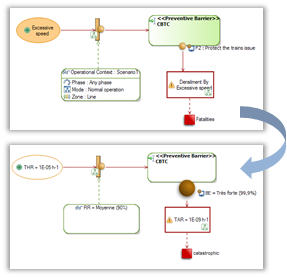
Complexity Management
By providing a completely customized tool to your users, you will dramatically simplify their modeling activity. Indeed, a tool which speaks their business language allows them to focus on what really matters. Nevertheless, when the domain model is complex, the models themselves could remain complex too.
That's why Obeo Designer provides functionalities to facilitate working with such complex models.
Conditional Styles
A conditional style will apply a graphical rendering (shape, color, border, label tec) on a model element as soon as a condition is satisfied. For example, changing the size or color of an element according to one of its properties.
Layers
Like in imaging tools, you can define layers on your diagrams. Each layer can show new model elements or apply conditional styles. For example, to display derived relationships between diagram elements or to color in red some noteworthy elements. A layer can also change the content of a palette.
Filters
A filter allows users to hide some elements according to a condition. For example to hide all the objects whose property is less than a given value.
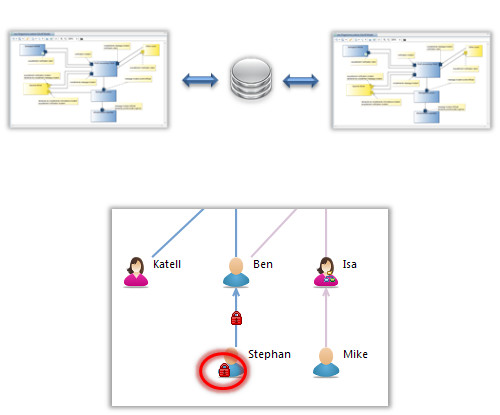
Repository-Based Collaborative Modeling
Obeo Designer Team allows you to store your models and representations (diagrams, tables, trees) in a shared repository to facilitate collaborative work with other team members. The same representation can be edited simultaneously by several users located in different places.
To avoid unnecessary locks on model elements, Obeo Designer Team provides two locking strategies :
-
Implicit lock: Any object being edited is automatically locked and other users are notified by a specific icon visible on all the representations where the object is visible. The lock is automatically released once the modifications are saved.
-
Explicit lock: A user can explicitly lock model elements to avoid their modifications by other users. The lock is released on demand.
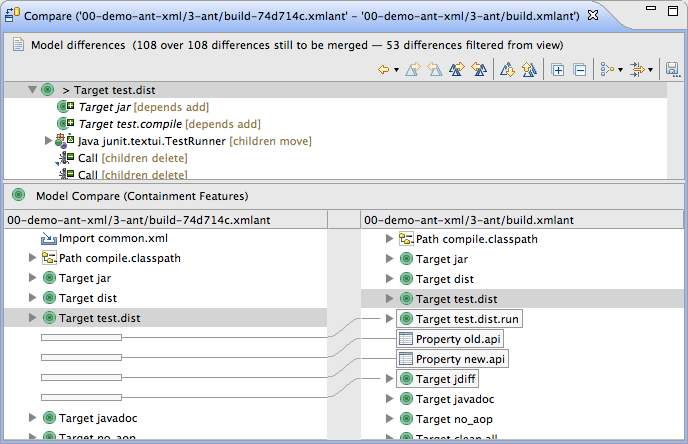
Models Comparison & Merge
Obeo Designer provides comparison and merge facilities for your models.
Based on EMF Compare, it includes a generic comparison engine and the ability to export differences in a model patch.
The comparison & merge mechanism is integrated with the Eclipse Team API meaning that it enables collaborative work on models using CVS, SVN and GIT.
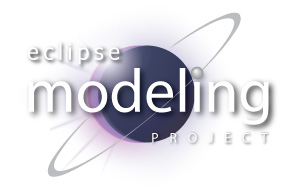
Eclipse Integration
Obeo Designer is based on Eclipse, the best platform to integrate tools. Supported by a consortium of more than 160 companies, Eclipse hosts a very active open-source community and a rich ecosystem of complementary products and services.
One of the most active project of this platform is the Eclipse Modeling Project which provides a unified set of modeling frameworks, tooling, and standard implementations.
Obeo Designer provides a ready-to-use integration of these components:
- EMF (Eclipse Modeling Framework), for building tools based on a structured data model.
- Sirius (Graphical Modeling Framework), for creating graphical editors.
- Ecore Tools, for defining your DSL.
- EMF Compare , for comparing and merging EMF models.
- Acceleo, a template-based code generation language and toolkit.
- EEF (Extended Editing Framework), for creating form-based edition tools for EMF models.
- Xtext, for creating textual edition tools for EMF models.
- CDO, for storing the models within a database and managing live collaboration between users.
If you need Obeo to integrate specific components or versions, you can subscribe to an Obeo Designer support contract and we will manage a dedicated build for you.
